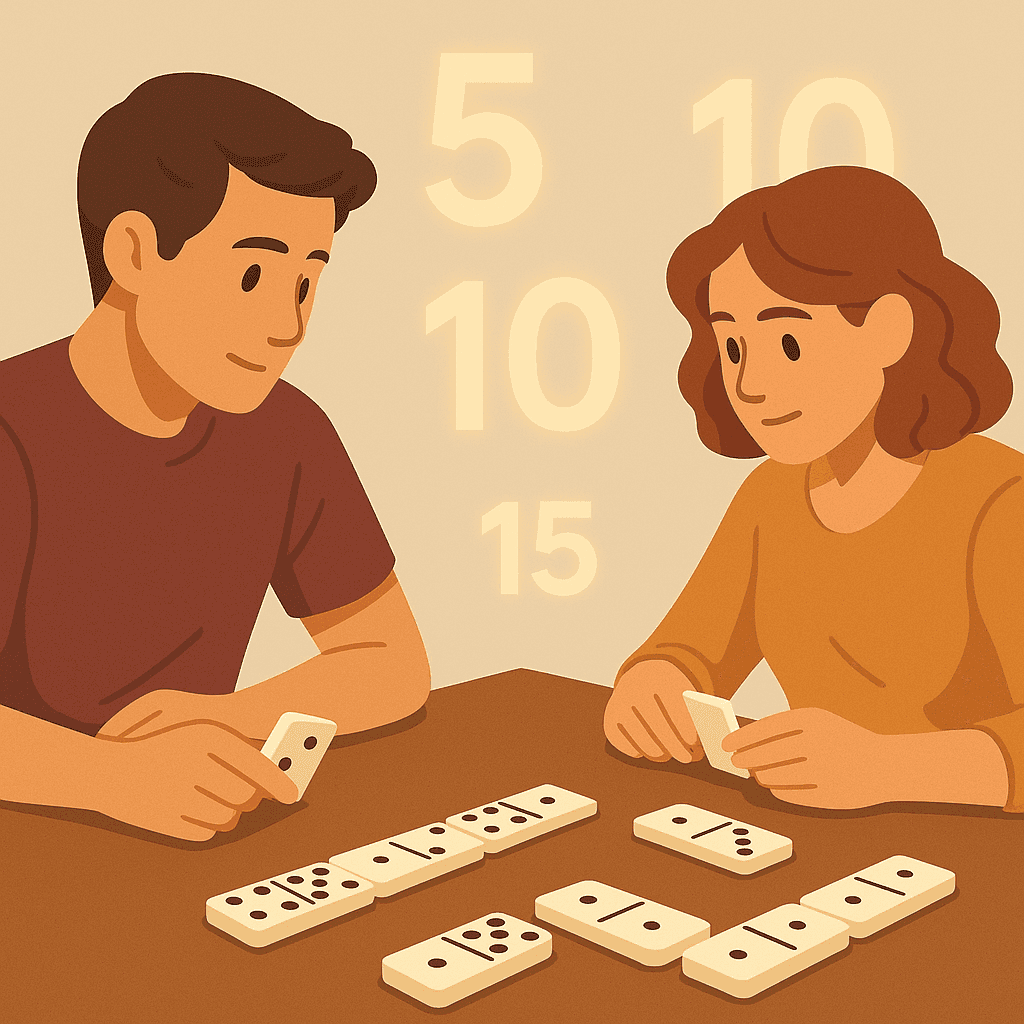
Domino Scoring Systems: How Points Are Counted
Dominoes can be played in many different ways, and one of the biggest variations lies in how players score points. Depending on the region and the chosen variant, the scoring system can range from very simple to highly strategic. Understanding the most common systems is key if you want to improve your play or explore new versions of the game.
Created By Adam Davis Fernsby
Dominoes can be played in many different ways, and one of the biggest variations lies in how players score points. Depending on the region and the chosen variant, the scoring system can range from very simple to highly strategic. Understanding the most common systems is key if you want to improve your play or explore new versions of the game.
| Scoring system | How it works | Example |
|---|---|---|
| Block & Draw | No points are awarded. The winner is the first player to get rid of all tiles, or the one with the fewest pips when no more moves are possible. | If a player ends the round and opponents hold tiles with a total of 15 pips, the winner scores nothing but the opponents’ pip count is noted for tie-breaking. |
| All Fives (Muggins) | Players score when the ends of the layout add up to a multiple of five. | If the layout shows ends of 3 and 7, that totals 10. The player scores 10 points. |
| All Threes | Similar to All Fives, but scoring is based on multiples of three. | If the open ends add up to 9, the player scores 9 points. |
| Point Blocking | The round ends when a player goes out or no moves remain. Each opponent’s remaining pip count is added up and given to the winner as points. | If one player wins and opponents hold 12, 9, and 6 pips, the winner scores 27 points. |
| Mexican Train | Points are the total number of pips left in each player’s hand at the end of the game. The lowest score wins. | If a player has 15 pips left, they add 15 points to their score. The aim is to keep the score low. |
Block and Draw Games
In the simplest forms of dominoes, scoring is not about collecting points but about avoiding them. The goal is to empty your hand before your opponents do. If no one can make a legal move, the player with the lowest total pip count wins the round.
All Fives and All Threes
In All Fives (also called Muggins), points are scored when the open ends of the layout add up to a multiple of five. This requires quick mental calculations and makes each placement important. A similar system exists in All Threes, where the sum must be a multiple of three.
Point Blocking Systems
In blocking-style scoring, the round ends when a player empties their hand or when no one can continue. At that point, all players count the pips left on their tiles. The total is awarded to the winner as points. This system adds a tactical element, since holding onto high-value tiles can backfire.
Mexican Train Scoring
Mexican Train uses cumulative scoring across rounds. At the end of each round, the pips left in a player’s hand are added to their total score. Unlike other systems, here the winner is the one with the lowest score after all rounds have been played.
Conclusion
Scoring in dominoes can be as straightforward or as complex as you like. From casual block games to the mathematical challenge of All Fives, there is a system to suit every type of player. To get started with the basics of the game itself, check out our full guide to Domino game rules.


